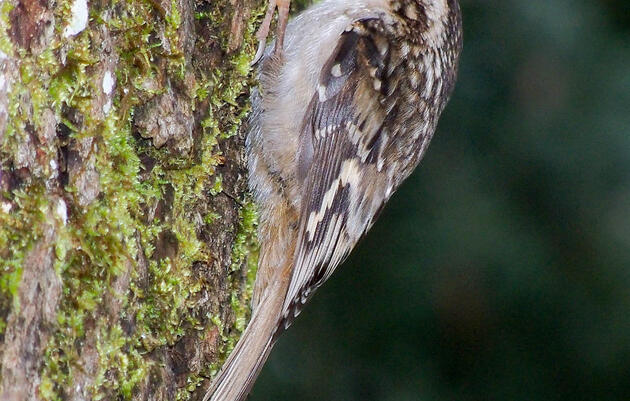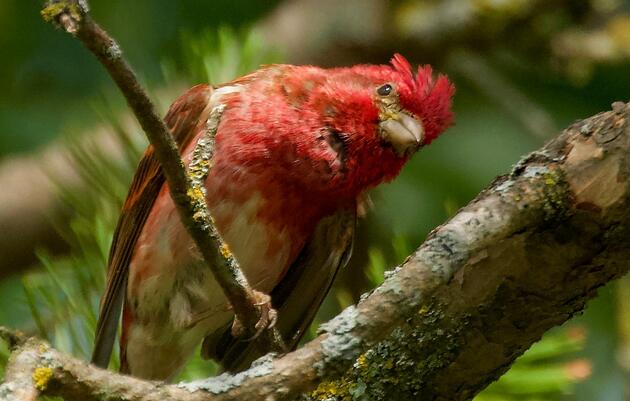What comes to mind when you picture a songbird? Generally we think of songbirds as cute little seed-eaters, flitting through the shrubs and bringing color to our backyard bird feeders, like the familiar House Finch. Or maybe you’re envisioning beautiful music coming from a dense forest thicket, like warblers during spring migration. But songbirds aren’t all small and they don’t all sing pleasing melodies--corvids such as crows and ravens are songbirds. In fact, more than half of all bird species are members of the songbird order, Passeriformes, often referred to as passerine songbirds or perching birds.
There are two North American songbirds that are even stranger than the rest--the Shrikes. The Loggerhead Shrike occurs throughout much of the country and can often be seen in open habitats interspersed with trees. The Northern Shrike, as its name implies, is a paler version that generally lives in the northern states and up into Canada, but can occasionally be seen as far south as central New Mexico and Arizona.
What makes shrikes so strange? They’re fully predatory songbirds. My very first job working with birds was a Loggerhead Shrike banding study in Illinois, and I learned a lot about these fascinating birds that summer. Loggerhead Shrikes will eat just about anything that moves, including grasshoppers, small mammals, reptiles, and even other birds. But their predatory lifestyle isn’t even the strangest thing about them--it’s how they catch and handle their prey that’s so fascinating. Being “perching birds”, shrikes don’t have talons and strong feet like hawks and eagles. That means they can’t catch and carry food with their feet – they have to use their beaks. They have a sharp tomial tooth on their beaks, exactly like raptors, that they use to deliver a killing blow to their prey. It gets even crazier – because Shrikes can’t carry prey with their feet, they actually carry their prey away in their mouth. They have the amazing ability to carry prey almost their same body weight this way!
But wait--there’s more! Shrikes can’t use their perching-bird feet to hold prey while they eat it, so they have found a somewhat macabre way of dealing with that problem. They take their prey to a thorny tree or a barbed-wire fence, and impale the prey on a spike. This serves two purposes. First, it gives them a way to hold the prey in place while they eat it. In addition, it serves as a safe storage, or larder, to save food for the future. Shrikes almost always build their nest in a thorny tree, and during the nesting season there will be dozens of small dead creatures hanging on the branches. When I was working with shrikes, one of my tasks was to catalog the contents of their larder. I’ll never forget walking around the base of a Honey Locust tree and coming face-to-face with a dead Field Sparrow, impaled through the throat by a large thorn. A few feet away, a severed bird leg was impaled. I also found the eggs of other birds hanging on thorns (empty of their contents – the shrike must not have thought that through very well) and even the shrike’s own regurgitated pellets. The impulse to impale is innate to shrikes, and I once saw a fledgling shrike attempting and failing to stick a grasshopper on a fence barb. Every time the young bird dropped the grasshopper, the mother picked it up and gave it back so the young bird could try again. Seems that the desire to impale is instinctual, but getting the technique right takes practice!
The Loggerhead Shrike is recognized as a “common bird in steep decline.” The Loggerhead Shrike has lost an estimated 74% of its population since 1970, mainly due to conversion of its habitat to agriculture and the overuse of pesticides. You can help bring shrikes and other native species back by planting native trees and shrubs in your own yard, and by eliminating pesticides. Advocating for the permanent protection of wildlife habitat, especially grasslands and open spaces, will go a long way to help ensure that future generations can see firsthand the fascinating behavior of this amazing species.







